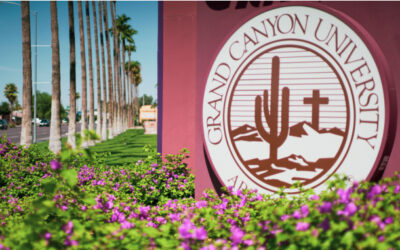By Corinne Murdock |
Arizona State University (ASU) announced last month that they redesigned their Architectural Studies, Bachelor of Science in Design (BSD) program to expand admissions for the sake of inclusivity, removing a built-in competitive edge that used GPA to reduce the number of second-year students from several hundred to 45. Competitive cuts are common practice for architecture programs: traditionally, the massive reduction affords students more one-on-one instruction and ensures a ratio of 10 to 20 students to one professor. ASU’s new take on their architecture program will have a ratio of 150 students to one professor, with about 10 teaching students to buffer. ASU is currently the only university to expand its architecture program in this way.
Herberger Institute for Design and the Arts (HIDA) architecture professor and Associate Director Catherine Spellman explained in the university’s announcement that it was “heartbreaking” to have to make hard cuts essentially based on GPA.
“We’ve rewritten the undergraduate course in architecture to be completely inclusive,” said Spellman. “It used to be that we had room for 45 students in the second year going forward, but we’ve rewritten the undergraduate BSD in architectural studies to accept everyone who has a 3.0 grade point average.”
In an interview with AZ Free News, Spellman explained that the students that made the cut under the previous program structure usually had around a 3.7 or higher GPA. Spellman made the case that GPA doesn’t directly measure intelligence or ability – instead, it reflects opportunity.
“A lot of what a GPA is, is a measure of a student’s opportunity. It’s one thing if you have a student that’s fully funded and doesn’t have to work to subsidize their education, is not raising a family – well, then that student is in a situation that they can achieve the GPA that they care to achieve,” said Spellman. “The next student may be a nontraditional student [like] a first-generation student that is perhaps working 40 hours a week and working to pay the mortgage for their family home. The university opportunity is still important to that student but the possibility of a [higher] GPA is different.”
When AZ Free News asked if there were concerns that the divestment of a built-in competitive nature to the program would lead to a reduced quality of students and their output, Spellman said that perspective was framed around privilege and a misunderstanding that quality in education necessitates exclusiveness. Spellman characterized competitiveness as advantageous for students of privileged backgrounds: those who aren’t necessarily representative of their community and society at large.
“The type of university we are is trying to make a place for all types of students and not just students that represent a type of privilege,” said Spellman. “[We are] really trying to be open-minded and inclusive, rather than exclusive and competitive about [the program].”
Spellman referenced ASU’s charter to explain their urgency to support inclusivity, asserting that the university’s role is to educate for success and not exclude.
“There is an attitude about quality in education that means exclusiveness. That, however, is not the university we are at. Our charter says that we are here to educate students to succeed, not to exclude people,” said Spellman. “You could say that a lower GPA means that the students aren’t as competitive but I would argue the more people we educate what architecture is about, the better we’re serving society. Architecture is a very important discipline relative to society. You learn literature, history, math, science, structures, [and] social behavior.”
Architecture professors restructured their teaching approach to accommodate the influx of students. One recent example of this was a mass exercise mimicking on-site conflicts. First-year Architecture 101 students had to work within a group to recreate assigned circular patterns on an outdoor field using butcher paper, while mitigating challenges presented by their “on-site” location, such as wind.
Spellman said that the transition to larger group work also came from a purposeful effort to deemphasize the idea that a one-to-one experience between faculty and students is the only way to conduct studio teaching (a method of hands-on instruction used in architecture programs). She noted that one-to-one experience was still available in ASU’s professional programs.
“It limits the numbers of students that you can have in a studio space if you teach in a one-to-one kind of way,” said Spellman.
AZ Free News also spoke with Marc Neveu, the head of ASU’s architecture program. He noted that their student expansion was just one component of a greater redesign of the program that began before his arrival four years ago.
“The basic premise [behind the redesign] was that ASU has a mission for being known who we include and how they succeed rather than who we exclude,” said Neveu. “Architecture schools are very competitive. Sometimes that competition may be good. More often than not that competition is very bad. It’s not healthy to stay up all night, it’s not healthy to protect your work from other people. It doesn’t actually model the way the professional practice works which is inherently collaborative. Rather than being competitive, we’re being collaborative, [like] working in teams.”
The complete overhaul of the program for inclusivity’s sake stopped short of challenging the grading system. That traditional scale remains, according to Neveu.
“We do have grades, we do have critique and feedback. It’s just that we’re not trying to pit students against one another,” explained Neveu. “My experience in undergrad – not by design – was that I learned more from my peers than from my faculty. [Here at ASU,] we’ve tried to design intentionally peer-to-peer learning, [such as] learning those sorts of soft skills.”
Neveu concluded by noting that the newly-redesigned program remains a work in progress, but expressed optimism in the promise of its unique nature.
Corinne Murdock is a reporter for AZ Free News. Follow her latest on Twitter, or email tips to corinne@azfreenews.com.








